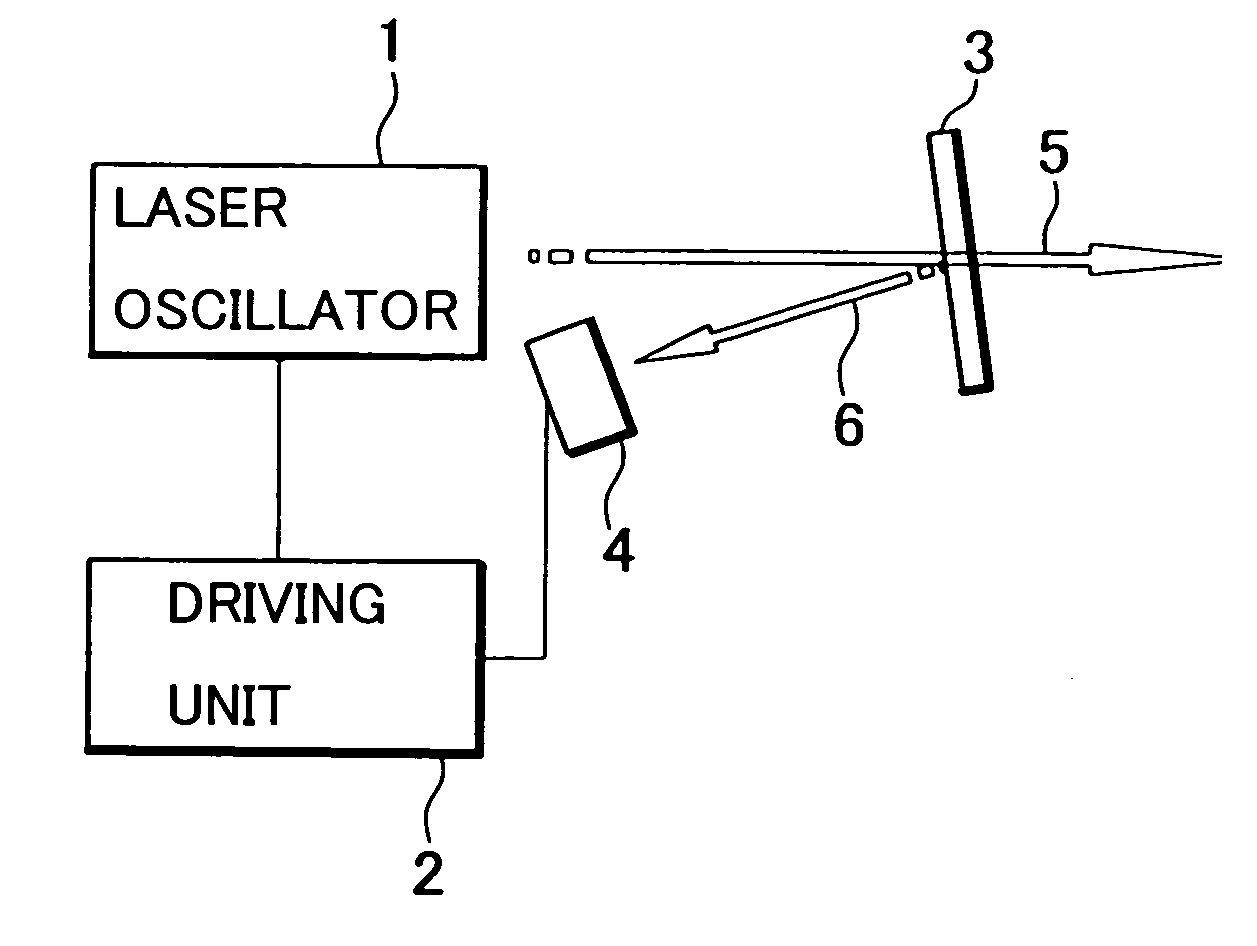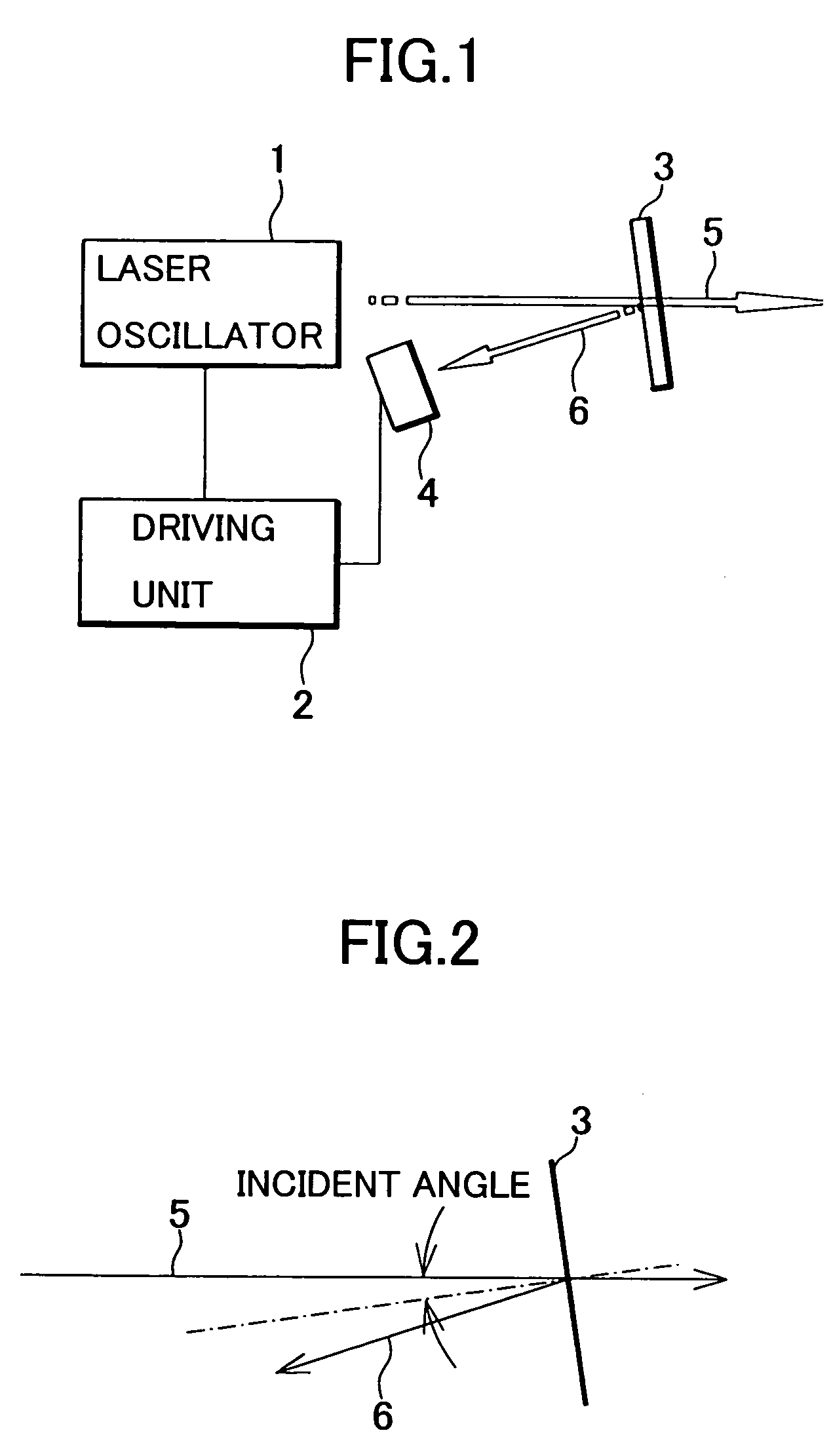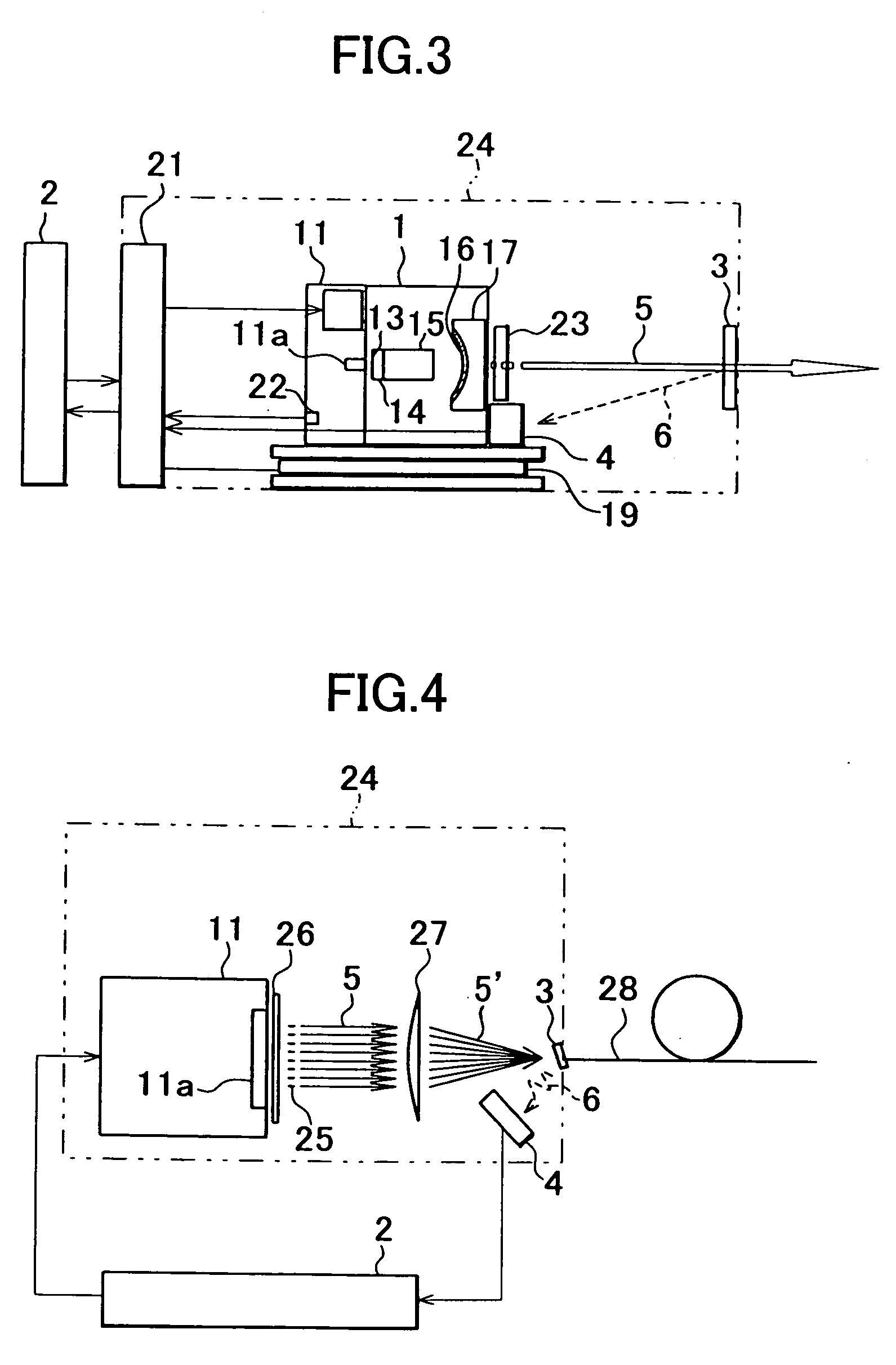Laser system
a laser system and laser beam technology, applied in the field of laser beam systems, can solve the problems of inability to detect the actual intensity inability to perform high-quality auto power control, and difficulty in performing output control of the laser beam, so as to improve the degree of freedom in positioning and high accuracy. , the effect of high accuracy
- Summary
- Abstract
- Description
- Claims
- Application Information
AI Technical Summary
Benefits of technology
Problems solved by technology
Method used
Image
Examples
first embodiment
[0046] Description will be given on a first embodiment referring to FIG. 1 and FIG. 2.
[0047] In FIG. 1, the equivalent component as shown in FIG. 13 is referred by the same symbol.
[0048] On an optical path of a laser beam 5 emitted from a laser oscillator 1, a luminous flux splitting means 3 is provided. The luminous flux splitting means 3 is arranged in such manner that the laser beam 5 enters a reflection surface at an angle of less than about 10°. A photodetector (photodetection means) 4 for receiving a reflection light from the luminous flux splitting means 3 is oppositely positioned to the luminous flux splitting means 3.
[0049] As shown in FIG. 15, when a laser beam enters at an incident angle of less than about 10° with respect to a reflection surface, reflectivity is approximately on a constant level for both p-linear polarized light and s-linear polarized light. Further, the present inventors have also confirmed that reflectivity is approximately constant for both p-linear...
second embodiment
[0054]FIG. 3 shows a second embodiment, in which the present invention is applied to a diode pumped solid-state laser as shown in FIG. 14. In FIG. 3, the equivalent component as in FIG. 14 is referred by the same symbol.
[0055] The laser oscillator 1 shown in FIG. 3 is a diode pumped solid-state laser of intracavity type SHG mode for converting frequency of a laser beam from a semiconductor laser. An excitation light emitted from the LD light emitter 11 is converted to a fundamental light at the laser crystal 14. Further, the fundamental light is converted by wavelength conversion to a secondary higher harmonic wave at the non-linear optical medium 15.
[0056] The LD light emitter 11, the laser crystal 14, the non-linear optical medium 15, and the concave mirror 17, etc. are composed as an integrated the laser oscillator 1, and the laser oscillator 1 is placed on a chiller 19 such as a thermoelectric cooling element (TEC).
[0057] The driving unit 2 can drive and control the LD light e...
third embodiment
[0067] The third embodiment as shown in FIG. 4 can be applied to a case where relatively high laser beam intensity is required, e.g. in a medical system such as a laser operation system. In case two or more laser beams 5 are bundled together and are used, it is preferable to perform auto power control of overall output of the laser beams 5′ bundled together rather than to perform auto power control for each of the laser beams.
[0068] The monitor light 6 reflected by the luminous flux splitting means 3 is reflected at the same reflectivity to each of the laser beams 5 regardless of the condition of polarization and wavelength of each of the laser beams 5. Thus, the monitor light 6 generated as the result of the reflection of the laser beams 5′ by the luminous flux splitting means 3 accurately corresponds to overall output of the laser beam 5′.
[0069] Regardless of the condition of polarization and wavelength of each of the laser beams 5, auto power control with high accuracy can be ca...
PUM
 Login to View More
Login to View More Abstract
Description
Claims
Application Information
 Login to View More
Login to View More - R&D
- Intellectual Property
- Life Sciences
- Materials
- Tech Scout
- Unparalleled Data Quality
- Higher Quality Content
- 60% Fewer Hallucinations
Browse by: Latest US Patents, China's latest patents, Technical Efficacy Thesaurus, Application Domain, Technology Topic, Popular Technical Reports.
© 2025 PatSnap. All rights reserved.Legal|Privacy policy|Modern Slavery Act Transparency Statement|Sitemap|About US| Contact US: help@patsnap.com



